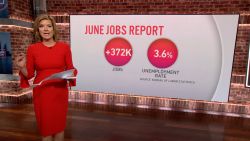Everyone puts their best foot forward during the job interview process.
Employers are looking to woo potential hires, while candidates are looking to highlight how their skills and experience will benefit the company.
Executive Brief
But before taking a job with a new employer, you want to make sure the position will be a good fit for your career track, the company’s culture matches your values and work-life balance needs, and the manager’s leadership style jibes with how you best perform.
But that’s not always easy to figure out. An interviewer might not be forthcoming if the hours are long and the leadership is lacking.
Do some online sleuthing
Start out by doing some research on websites like Glassdoor, Vault, Fairygodboss and CareerBliss to get a sense of what others are saying about life at the company.
While that can be a great starting point, online employee reviews aren’t always reliable, and should make up just a part of your research.
Some could’ve been written by employees with an ax to grind, or those whose experiences were not common.
Another issue is that some companies are simply too big to get a good sense of the culture of a specific division or team. Be sure to review the population of the respondents and whether a bad review is more of an outlier or a common theme, warned Paul McDonald, senior executive director at Robert Half.
Reviewing the company’s social media platforms can help gauge the culture, too. Are there pictures of staff outings? Employee recognition?
Recent news articles and press releases touting new products can hint a company is continuing to innovate and grow.
Figure out where the company is in its life cycle
Companies go in four life phases: launch, rapid growth, scaling and sustaining, according to Lou Adler, CEO and founder of training and search firm The Adler Group.
Each phase has a different set of challenges and hiring needs, which can provide a sense of what life will be like at the office. The rapid growth phase might mean long hours with lots project juggling, while the sustaining phase could mean days focused on quality assurance and process.
Set up the interview
Getting an interview on the calendar can provide insight into the organization and communication of a company: What was the tone of the person scheduling the interview? How responsive and helpful was the coordinator? Were you canceled on a bunch of times? Was the interviewer surprised and not prepared for the interview when you showed up?
“Companies that go out of the way to foster a smooth and positive interview process — that is a good indicator they take those steps to retain you in the long run,” said Sarah Stoddard, community expert at Glassdoor.
Schedule the interview early in the morning or later in the day to see how many people are still in the office, suggested Mary Pharris, director of business development & partnerships at Fairygodboss.
Look around as you wait
The waiting area can be full of clues, if you look closely.
“How is the person at reception or the front desk treated by others? How is the office decorated? How are the workplaces arranged? Do you see family photos?” asked Amanda Augustine, career advice expert from TopResume.
Look for any postings about social events, and how employees are interacting with each other.
“Is the space inviting or is it cold? Is there a sense of community and can you hear conversations and people interacting or is it more siloed?” said Corey Berkey, human resources director at JazzHR.

Ask the right questions
You should always ask questions during the interview process, which is as much an audition for the company as it is for you.
But don’t ask mundane questions that you can easily find answers to online.
Ask about what an average day would look like, project schedules and deadlines and what the interviewer likes about working at the company.
Inquire about the frequency of interactions and updates from the executive leadership team, suggested Stoddard. Open communication helps establish company objectives.
“…If leaders have little to no communication with their workforce, there’s a high chance that employees won’t understand the why behind the work they are doing every day,” she said.
Asking why the position is open can also be illuminating.
“Did the person get promoted or did they leave?” said McDonald.
To find out if there’s room for growth at the company, ask interviewers how long they’ve been working there and how their role has changed.
Inquire about mentor and other training programs and what the career momentum looks like for this position, advised Stoddard.
It’s also helpful to ask different people the same questions about the company and job, said Augustine. If they have conflicting answers to questions like the expected duties, career trajectory, or management style, that could signal they haven’t nailed down the role yet.
Meet with the rest of the team
Ask to meet with current employees who you’d be working with. If a company isn’t open to you meeting with potential colleagues, they could be trying to hide something.
Meeting with potential team members allows you to ask them about projects, deadlines and schedule expectations.
“Don’t be afraid to ask the peers what they find challenging about the role and determine ‘Is this something everyone finds challenging or just this person?’,” said Berkey.






















